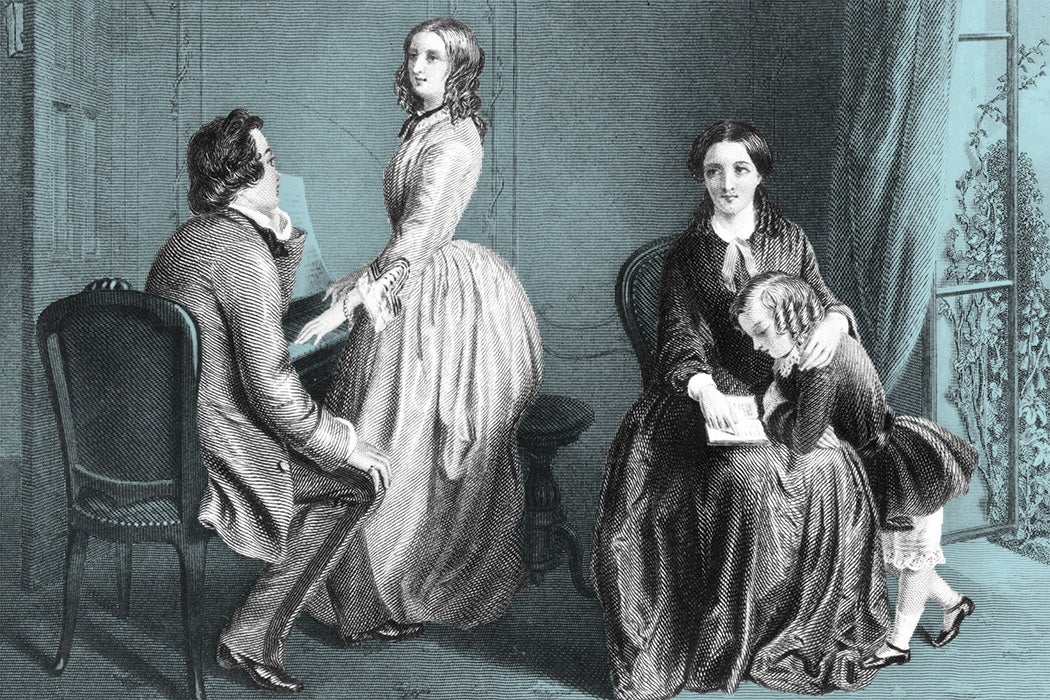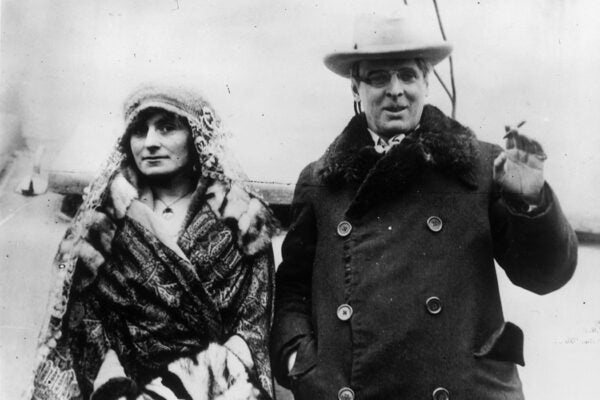In the early Victorian era, few families in Britain hired governesses to care for their children, and few young women were employed in that job. Yet, as literature scholar Nora Gilbert writes, the idea of the governess had an outsize influence on the cultural discourse and literature of the time, partly because many governesses were also prolific writers.
In women’s periodicals, Gilbert writes, governesses appeared as troubled and troubling figures. They occupied a peculiar class position, educated and “well-bred” enough to serve as a role model to children but forced by economic circumstances—such as the death or bankruptcy of a father—to work for wages. Their lives of hard work were often presented as pitiable. Yet they also appeared as threats to the families that employed them, as potential seductresses targeting the men of the house or exposers of family secrets.
In the 1840s, governesses appeared as significant characters in novels including Charlotte Brontë’s Jane Eyre, Anne Brontë’s Agnes Grey, and William Makepeace Thackeray’s Vanity Fair. In most such books, Gilbert writes, “the heroine is saved from the drudgery and intellectual stagnation of her work life via the conduit of marriage.” But this was rare in real life, since the bachelors of employing families didn’t typically see the hired help as an appropriate match.
Articles often presented the spinsterhood of governesses as tragic. But Gilbert notes that, at the time, remaining unmarried was the only way for a woman to keep control over her property. This added to the threat she seemed to pose to the status quo, as a “menacing symbol of unencumbered femininity.”
In fact, in their letters, diaries, and memoirs, some women presented their choice to become a governess as an adventurous rebellion against conformity. One such woman, Nelly Weeton, explained in her journal that, when the people at home learned that she was heading out to work on her own, “the world will perhaps stare and wonder—Let them.”
Their social distance from both their employing family and working-class servants like maids and footmen meant that a governess often spent her free time in her own room. While some experienced a strong sense of loneliness in this position, Gilbert suggests that this isolation—along with the material provided by observing the family life of the gentry from the sidelines—created ideal circumstances for writers such as the Brontë sisters to hone their craft.
Weekly Newsletter
“Just as Virginia Woolf would envision in her landmark feminist treatise, the activity that this isolated, educated woman habitually and productively turned to was the activity of writing,” Gilbert writes.
This was not just true for women who went on to become household names but also for others who found a sense of autonomy in the written word. For example, Agnes Porter, who worked as a governess early in the nineteenth century, explained that she “wrote to amuse my self; I felt the pleasure of existence in a peculiar manner, and seemed to derive amusement from resources of my own with extreme satisfaction.”







